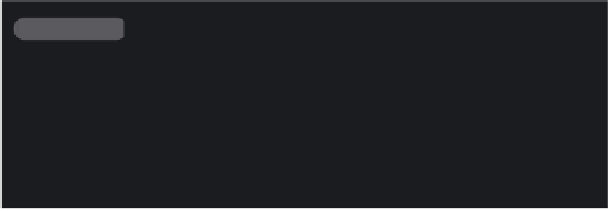Graphics Reference
In-Depth Information
⎡
⎤
⎡
⎤
⎡
⎤
⎡
⎤
—
n
1
—
σ
1
—
v
1
—
⎣
⎦
=
⎣
u
1
⎦
⎣
⎦
⎣
⎦
—
n
2
—
u
2
u
3
σ
2
—
v
2
—
n
2
⎣
—
⎡
—
—
n
3
—
σ
3
—
v
3
—
n
3
v
3
——
——
U
Σ
V
T
3rd right singular vector
Figure 8.72
Direction estimation. The direction
g
is taken from the third row of the right vector in the
singular value decomposition. (From [Jakob et al. 09] c
2009 ACM, Inc. Included here
by permission.)
ters” this point to the best approximation to the intersection of the ribbons in the
plane
g
⊥
perpendicular to the predicted direction
g
. To compute this recentering,
points on the ribbons are projected onto
g
⊥
, and lines in the plane are fit to the
projected points. This forms a star-shaped set of lines as shown in Figure 8.73,
the center of which is taken as the recentered point. Again, the intersection of the
lines is overdetermined and not likely to be precise, so a least squares solution is
employed for the best fit.
The algorithm for a single fiber terminates when the “grown” fiber runs out
of data or exceeds the bounds of the sample. Repeating the algorithm until no
ribbons remain, or the remaining ribbon data is not useful, resolves many visible
hair fibers. But it may leave holes due to occlusion; hair fibers at the center of
the sample might be invisible to the camera from any of the positions. Even
though fibers are not directly visible, they can affect the appearance of the hair
volume through multiple scattering. Consequently, the authors propose a method
for artificially generating hair fibers in the empty regions. The method uses a
Figure 8.73
The recentering correction works by fitting lines to the ribbon sample points, and using the
best intersection of the lines. (From [Jakob et al. 09] c
2009 ACM, Inc. Included here by
permission.) (See Color Plate XVIII.)






























































































































